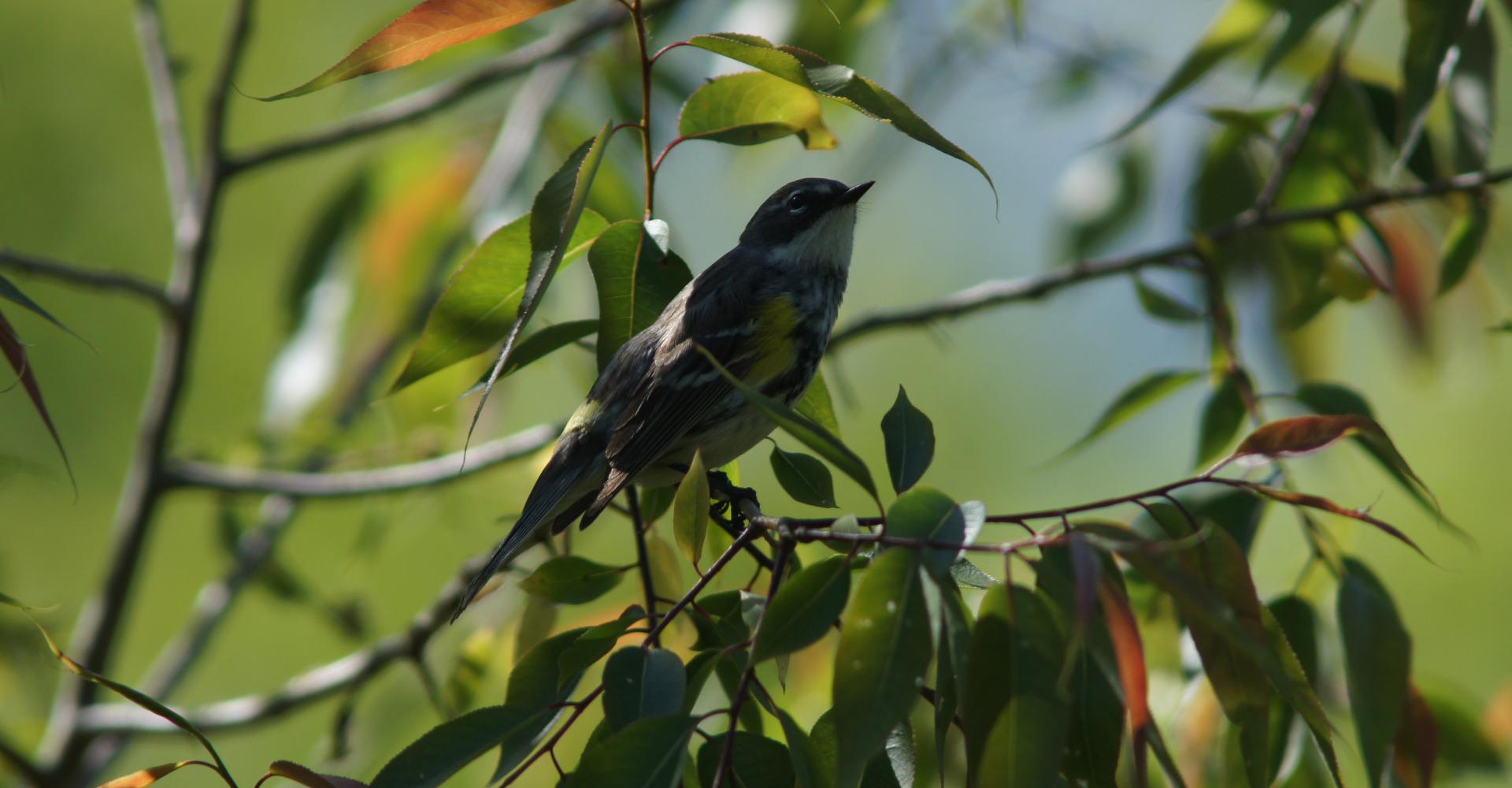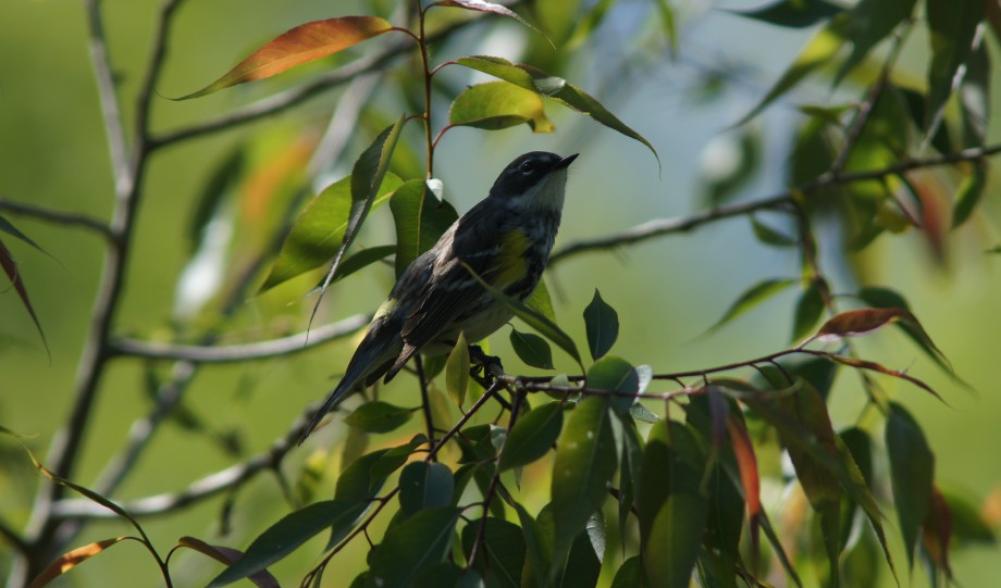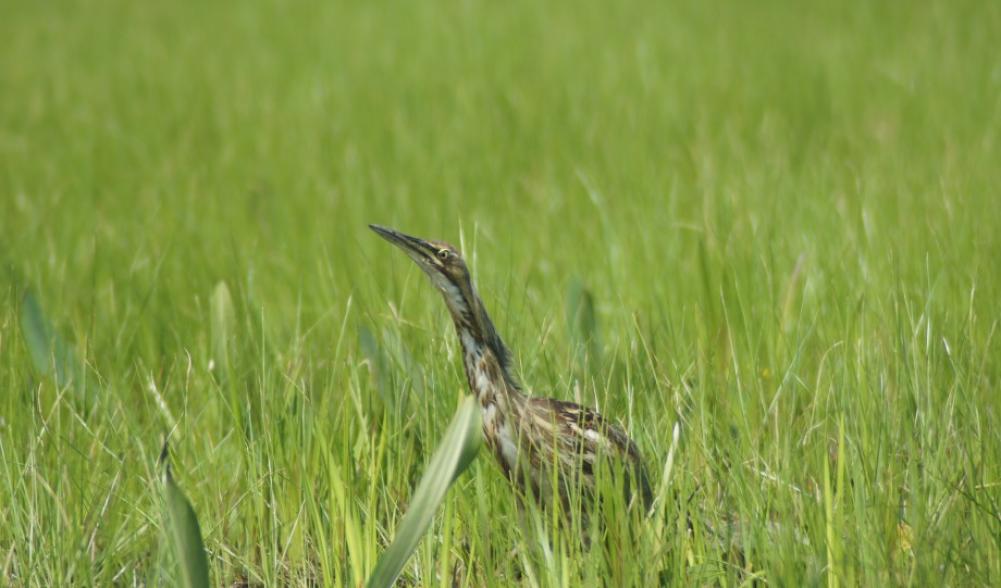The Great Adirondack Birding Celebration once again came to the Paul Smith's VIC – in this its tenth year. I helped lead field trips again as well – this year to Madawaska, a large complex of varied habitat north of Paul Smith's most famous for its stretches of boreal bog and forest. While rain was in the forecast all week, we had a full crew of folks excited to explore the landscape composed of state land and adjoining conservation easements.
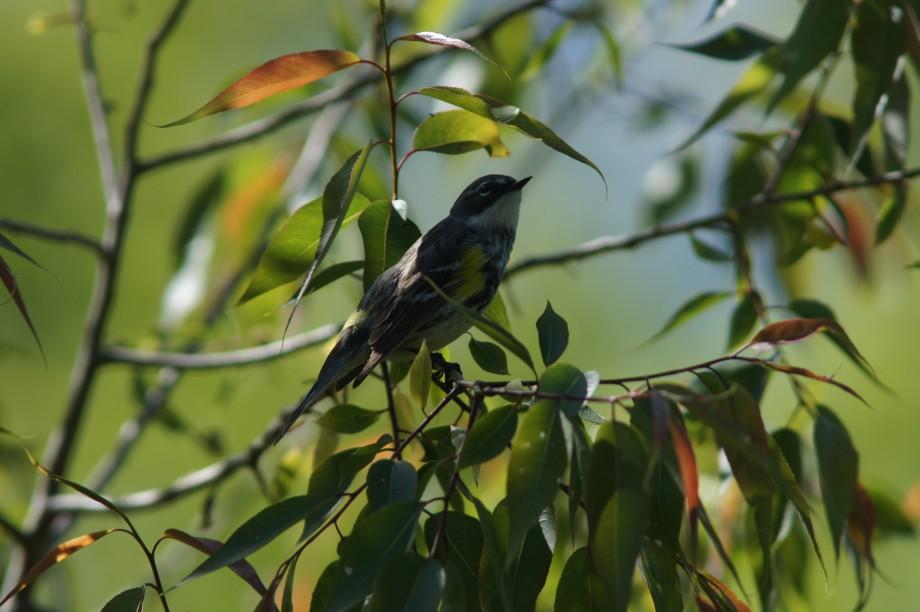
We met early at the Paul Smith's VIC for breakfast and caravanned up Keese Mills Road stopping along the way for various birds when it wasn't raining hard. Listening with the windows down as we drove we managed to find quite a few birds in this way, and we had wonderful looks at chestnut-sided and mourning warblers in a brushy stretch of road, the latter of which is not always one of the easier Adirondack Warblers to see.
We continued on to where Keese Mills Road becomes the Blue Mountain Road and we stopped, listening to blackburnian and black-throated blue warblers, and brown creepers, among other species. We also found an old hawk nest in a stand of pines, but found nobody home. Owls often use old hawk nests and we were hoping to find a great-horned owl.
Eventually after winding for several miles, the road became dirt, and the woods became more boreal in nature – surrounded by spruce and balsam fir in wet, mossy woods. We stopped along one stretch of road near a stream and found four northern waterthrushes (a species of warbler) – none of which showed themselves to the group. We had better luck in finding a couple yellow-bellied flycatchers, and we worked long and hard, but eventually found a Canada warbler that had been singing from a thick stand of balsam. Red-breasted nuthatches, purple finches, northern parulas, and, yellow-rumped, Nashville, and magnolia warblers were along the road and we ended up staying there for a long time – easily losing track of time. When we finally arrived at Indian Rock parking area to walk into Madawaska Pond, we found we had taken over two hours to make it there! Despite the rainy weather our birding efforts had been quite productive.
We set out on our flat hike into the pond and found that there were a large number of happy mosquitoes in our greeting party at the parking area. It turned out to be the buggiest area of the day. We quickened our pace due to the mosquitoes, but were soon slowed again by magnolia, Nashville, Canada, and black and white warblers singing along the wide two-track trail into the pond. I was surprised not to hear Swainson's thrushes singing as we wound through beautiful coniferous habitat to the pond, finding gray jays along the way. The jays sat high on a tree, offering us ample opportunity to enjoy them before they glided away.
The trail eventually led up to the pond where we had great views of a singing alder flycatcher and listened to swamp sparrows and common yellowthroats sing in the grasses. Then we unexpectedly spooked an American bittern from the grass and reeds and watched it fly over the marshy backwater of the pond and settle in some reeds on the far side with its nose in the air. It stayed in view long enough for everyone to leisurely view it through a scope.
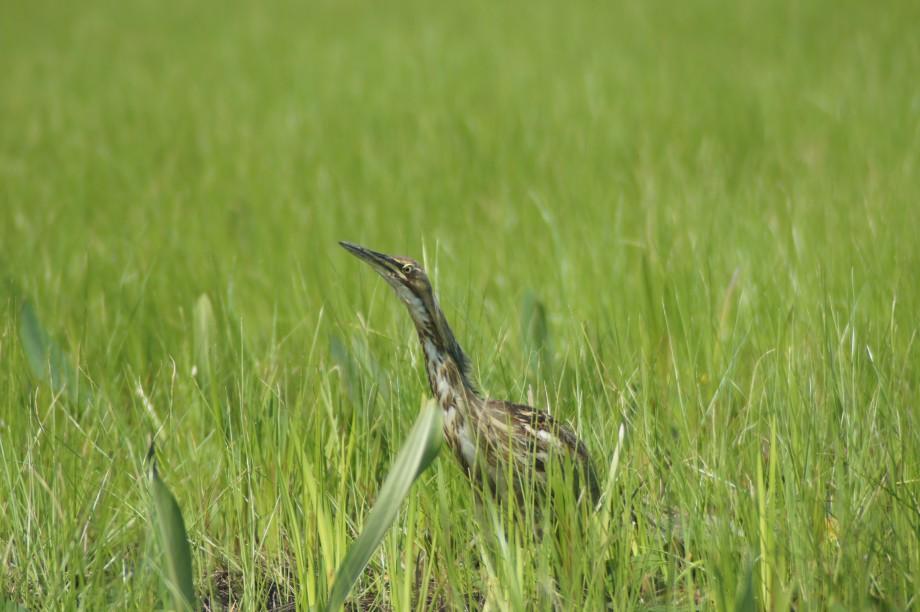
So we walked back out to our cars, listening to a growing number of singing Swainson's thrushes as we went. As we started to drive back to the VIC a broad-winged hawk flushed across the road and landed in a tree. We continued on, sorry to leave Madawaska, but happy by the prospect of lunch. Birding is hungry work after all, and by this time the sandwiches were calling us by name. Once back at the VIC, we used lunch to reconvene and recount the morning and finalize our day's checklist. We had found 63 species of birds including 17 species of warblers! Not a bad morning's work and one that I thought deserved an extra turkey sandwich and a second helping of potato salad. And another pickle.

